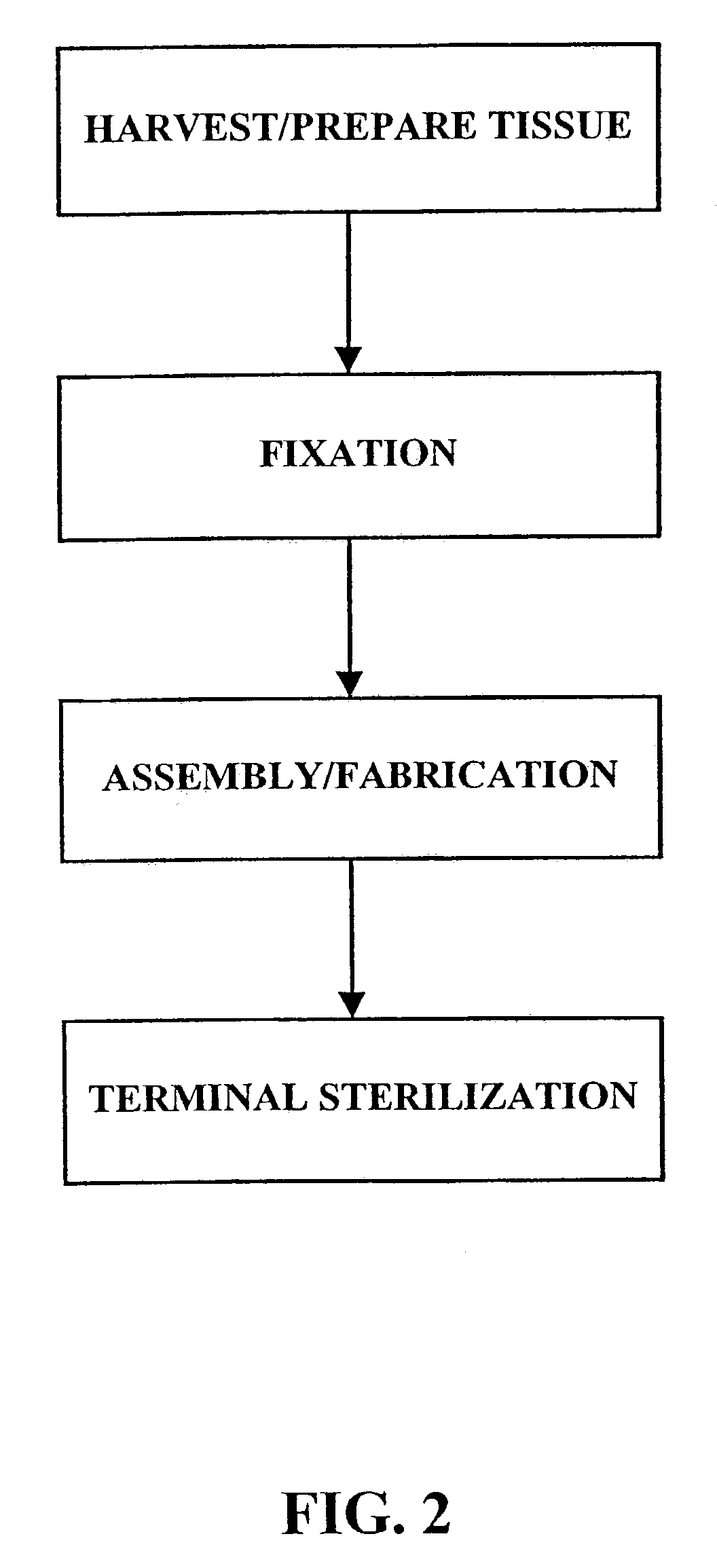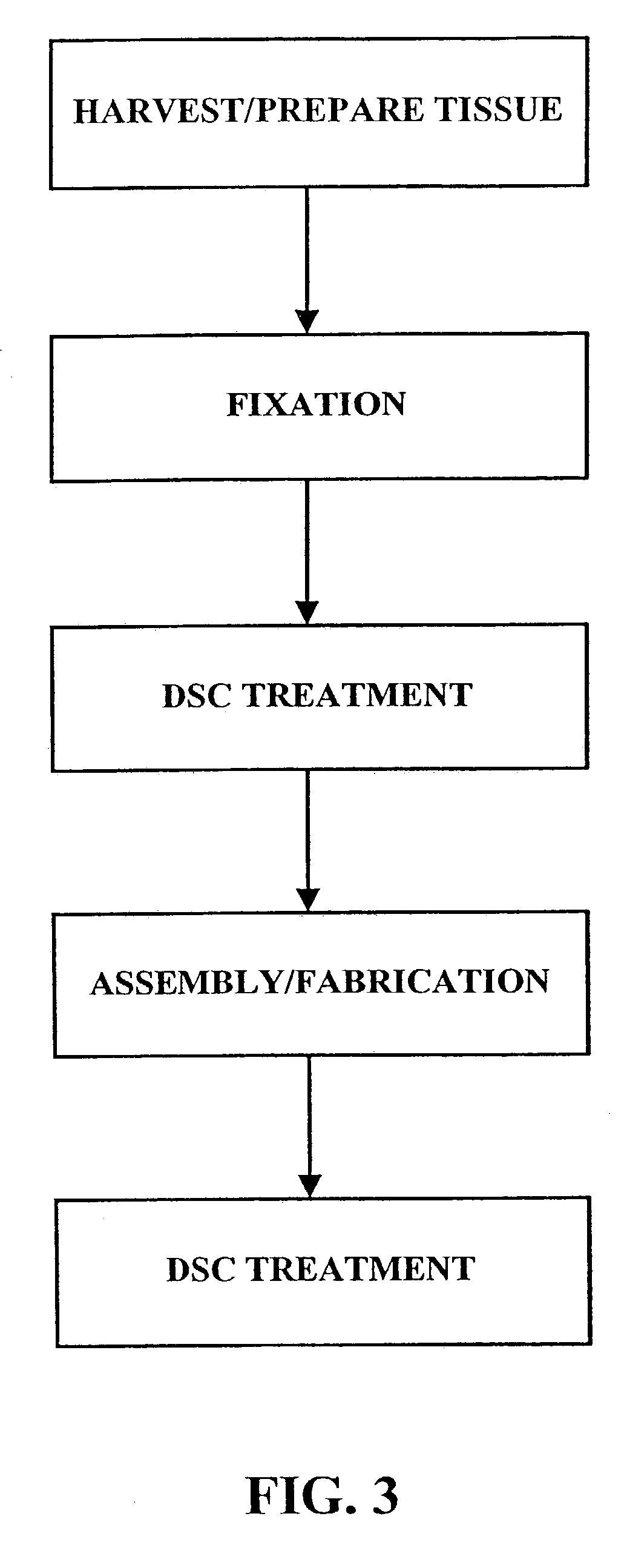Method for treatment of biological tissues to mitigate post-implantation calcification and thrombosis
- Summary
- Abstract
- Description
- Claims
- Application Information
AI Technical Summary
Benefits of technology
Problems solved by technology
Method used
Image
Examples
Embodiment Construction
[0028]As shown in FIG. 1, the fixation / sterilization method of the present invention generally comprises six (6) steps as follows:
Step 1: Harvest / Prepare Biological Tissue
[0029]The desired biological tissue is harvested (i.e., surgically removed or cut away from its host animal). Thereafter, it is typically, trimmed or cut to size and washed with sterile water, balanced salt solution, saline or other suitable washing solution.
Step 2: Fixation of Biological Tissue
[0030]The biological tissue is then contacted with a crosslinking agent, such as an aldehyde (e.g., formaldehyde, glutaraldehyde, dialdehyde starch), polyglycidyl either (e.g., Denacol 810), diisocyanates, photooxidation, or carbodiimide(s)) to crosslink the connective tissue proteins present within the tissue. Due to the long standing use and experience with glutaraldehyde, a presently preferred fixative for use in this step is a solution of 0.2–2.0% by weight glutaraldehyde. For example, the biological tissue may be immers...
PUM
| Property | Measurement | Unit |
|---|---|---|
| Temperature | aaaaa | aaaaa |
| Temperature | aaaaa | aaaaa |
| Temperature | aaaaa | aaaaa |
Abstract
Description
Claims
Application Information
 Login to View More
Login to View More - R&D
- Intellectual Property
- Life Sciences
- Materials
- Tech Scout
- Unparalleled Data Quality
- Higher Quality Content
- 60% Fewer Hallucinations
Browse by: Latest US Patents, China's latest patents, Technical Efficacy Thesaurus, Application Domain, Technology Topic, Popular Technical Reports.
© 2025 PatSnap. All rights reserved.Legal|Privacy policy|Modern Slavery Act Transparency Statement|Sitemap|About US| Contact US: help@patsnap.com



